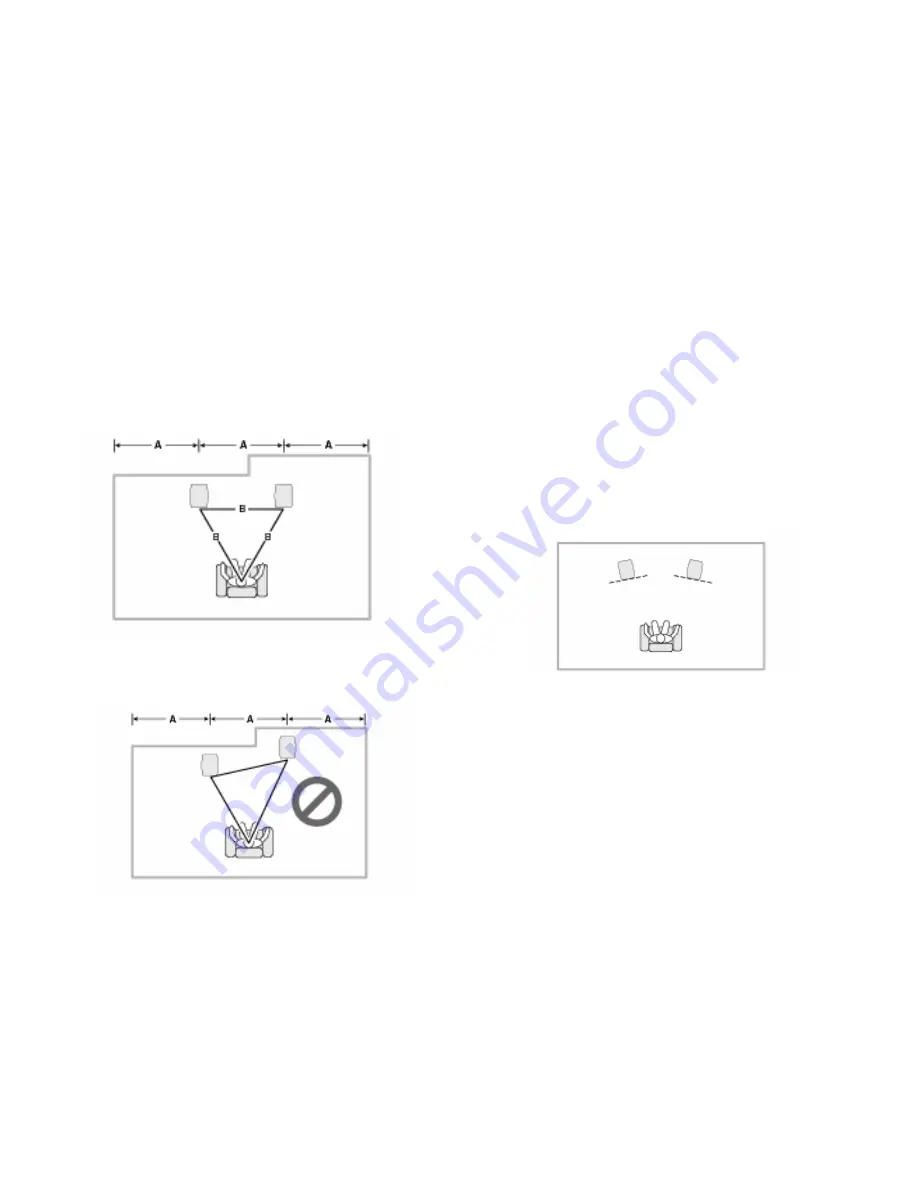
starting guide. This suggests that the best place-
ment for your Left speaker is approximately 1/3 of
the way along the wall behind your speakers.
Similarly, the best place for the Right speaker is
usually 2/3 of the way across the same wall.
Whatever distance you finally select, use a tape
measure to make sure that each speaker is placed
at the same distance from the back wall. With
that same tape measure, make sure the speaker-
to-listening/viewing position is the same for each
speaker as well. If there's a conflict here (as
would happen with an irregular wall behind the
speakers), we suggest that you equalize the dis-
tance between the front of the speakers and your
favorite listening/viewing position. If that places
one speaker closer to the wall behind it than the
other, don't be too concerned.
In other words, this…
Is generally preferable to this…
Remember that the "Rule of Thirds" is a basic
guideline only. Some acousticians recommend
placing the main (Left and Right) speakers so that
they form an equilateral triangle with the prime
listening/viewing position. It's worth trying for
this ideal, but don't get overly concerned if your
room doesn't allow this precision.
Side walls have a major impact on the sound you
hear. Ideally, you should not place your main
speakers close to them. Remember that the Rule
of Thirds" gives you a good starting position, but
you should feel free to experiment. Ideally, try
not to place your main speakers so they're
ex-
actly
the same distance from the closest side
walls. A bit of asymmetry here is actually prefer-
able.
Symmetrical
placement generally results in
larger
standing waves
in the room that reinforce
certain frequencies and diminish others. This,
obviously, is not a good idea. Follow the same
guideline with the Right speaker. When you take
the time to place your speakers properly, you'll
realize better "imaging" (the apparent lateral
placement of individual instruments or voices),
and more depth or "layering". You'll hear those
advantages because you'll be avoiding the aural
confusion caused by so-called "first reflections"
that complicate our perceptions when speakers
are too close to a wall's large, flat, reflecting sur-
face.
2.2 Should you “toe-in” your speakers?
Some people like to "toe-in" their main speakers
to get better performance. This simply means
aiming both Left and Right speakers so that they
point towards the prime listening/viewing posi-
tion rather than straight ahead. This is how
many people aim their speakers. "Toe-in" can
improve imaging and add a sense of spacious-
ness to the sound. In addition to imaging im-
provements, toe-in can also change your
speaker's tonal balance (or timbre). For that rea-
son, you may want to play with toe-in to get the
most out of your speakers. Some time experi-
menting here can yield a better match to your
room's acoustic properties, provide a clearer,
more precise center channel speaker, or just bet-
ter suit your own listening preferences. Enjoy!
2.3 Center Channel Speaker Placement
Place your center-channel speaker between your
Left and Right speakers as close to your TV
































